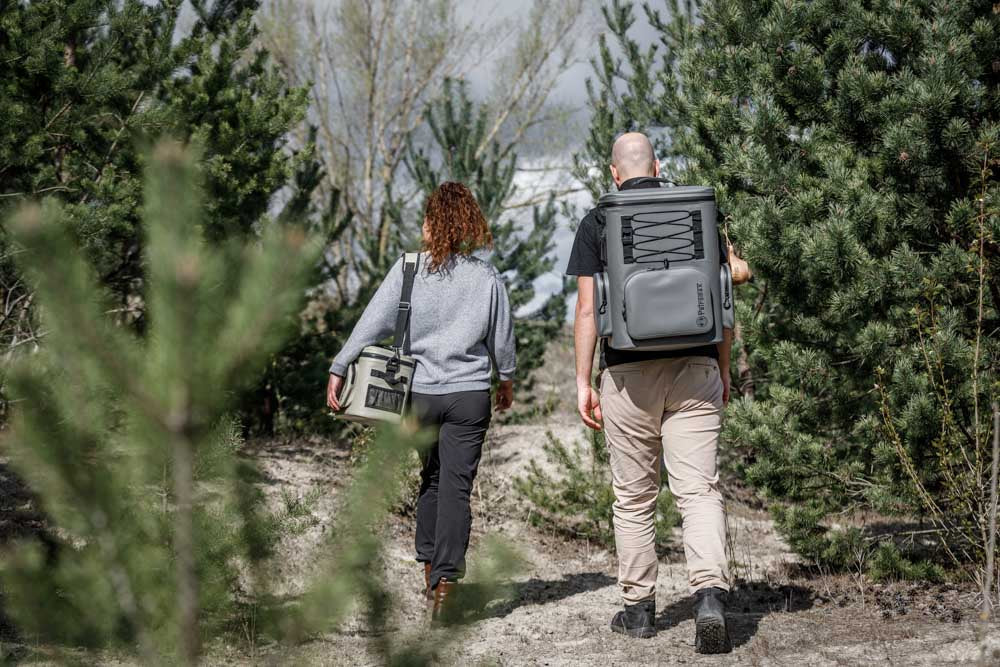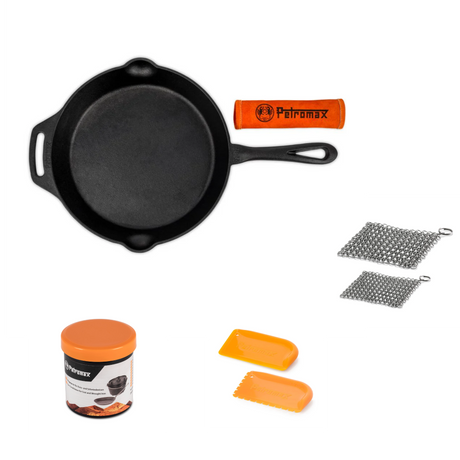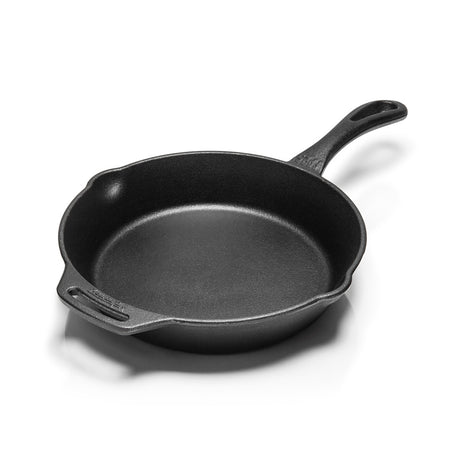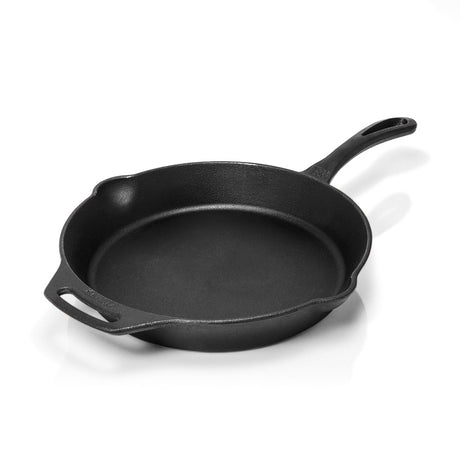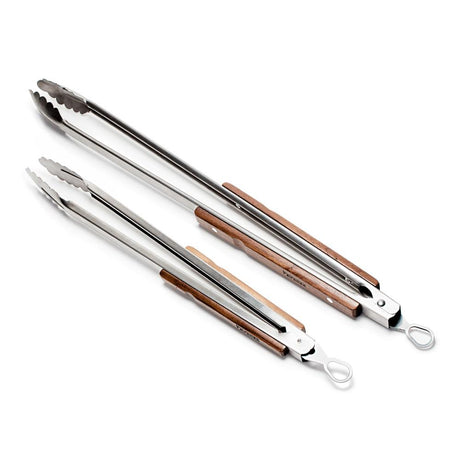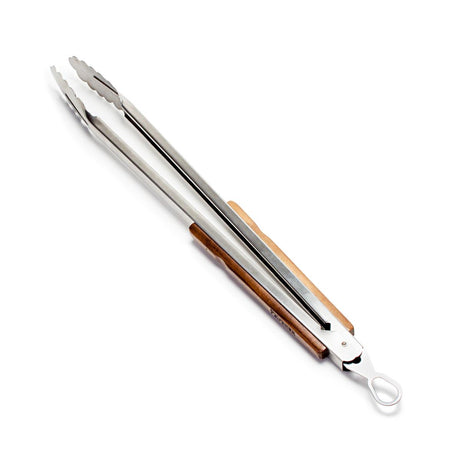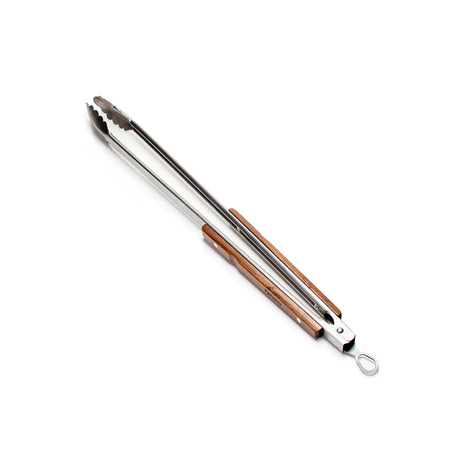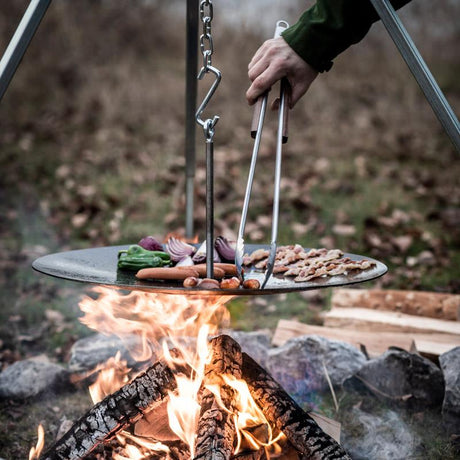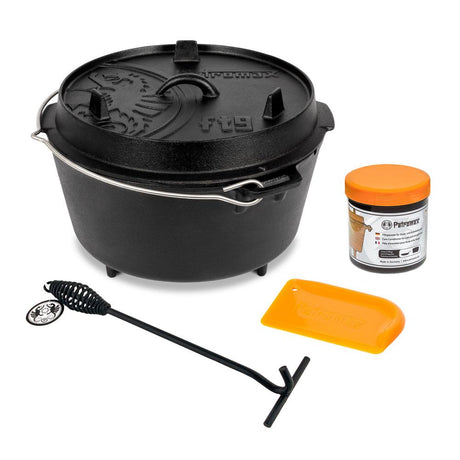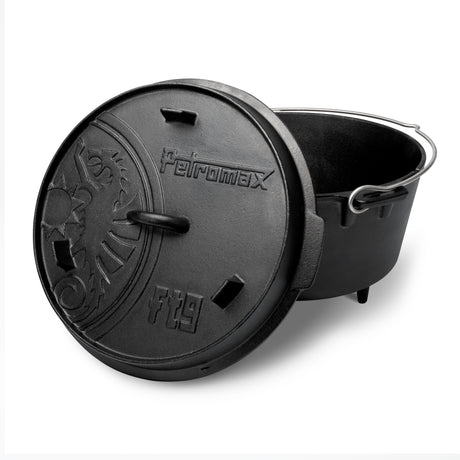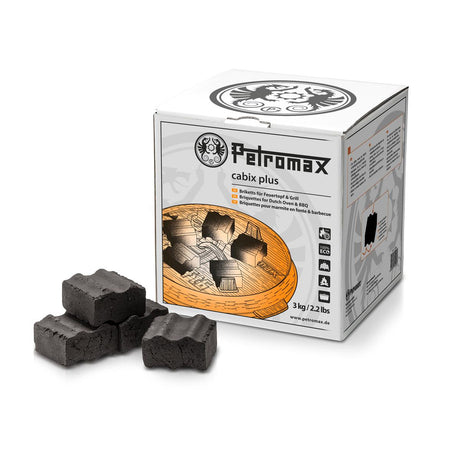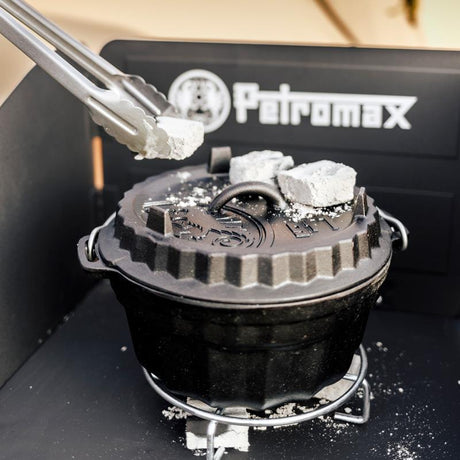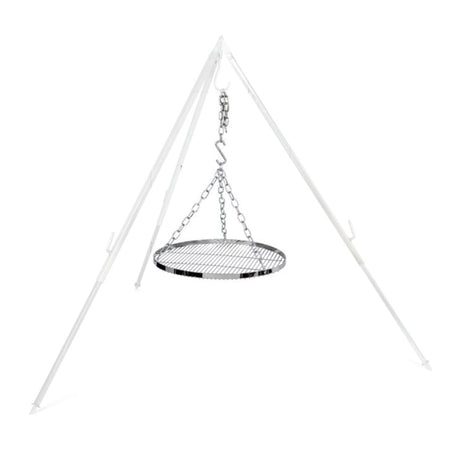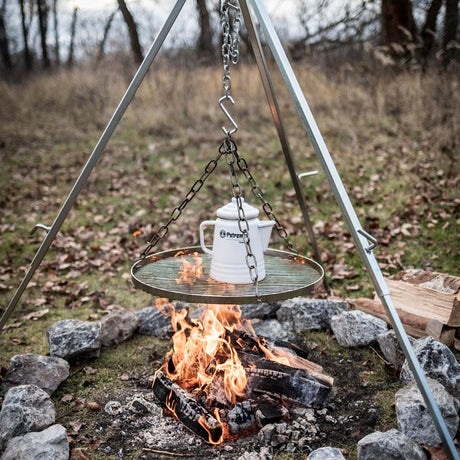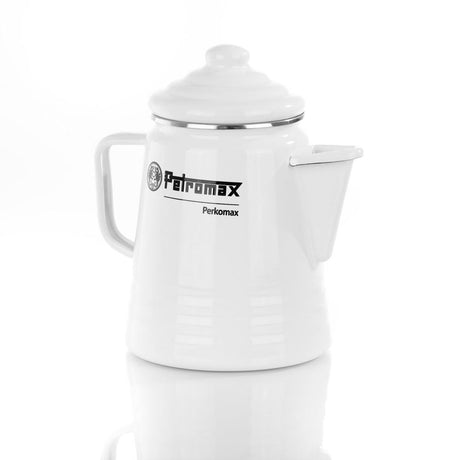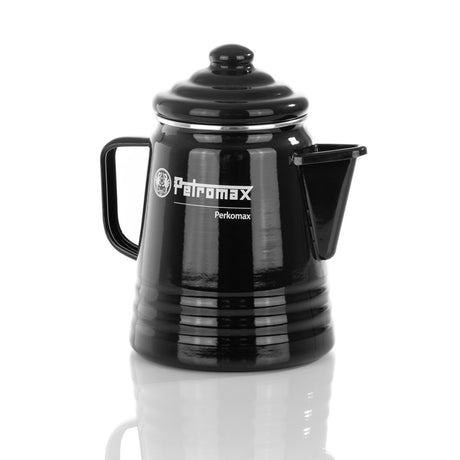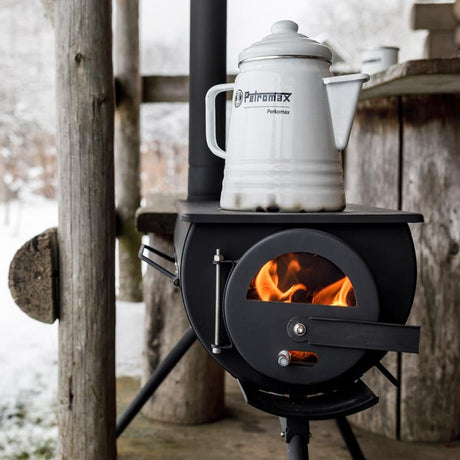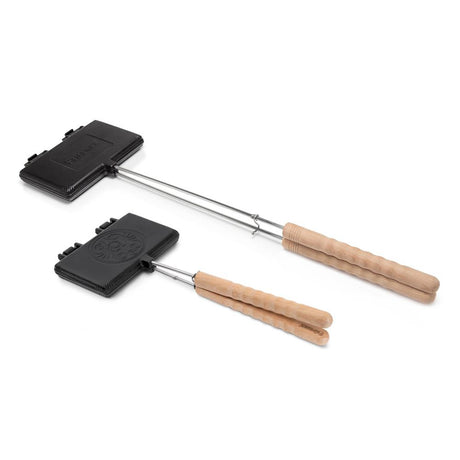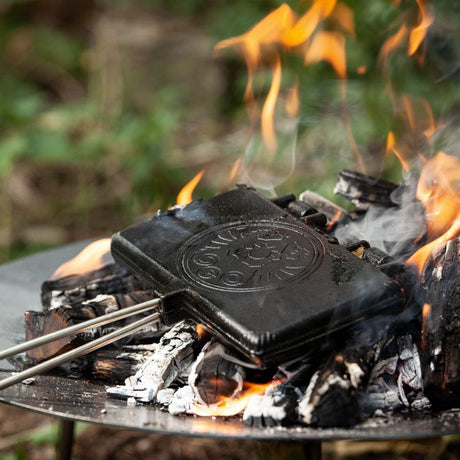Are you planning a day at the beach, a picnic in the park or a long car journey and wondering how to keep your drinks and snacks nice and cool? Welcome to the ultimate showdown: cool box vs. cool bag! In this detailed guide, you'll find out everything you need to know to make the perfect purchase decision.
Table of contents
The evolution of mobile cooling
Cooler bag in detail
Cool box in detail
The special tip: cooling backpacks
Comparison of systems
Buying advice
Conclusion
The evolution of mobile cooling
What started out as simple insulated bags has developed into highly efficient cooling systems. The history of mobile cooling is closely linked to our outdoor activities. While simple foam insulation was once used, today high-tech materials are used that can maintain temperatures for up to 72 hours. This development has not only improved cooling performance, but also significantly increased comfort.
The cool bag - your flexible companion
The modern cooler bag is a true all-rounder for anyone who likes to travel spontaneously and flexibly. Its greatest advantage lies in its practical handling: with a weight of usually less than one kilogram, it can be transported effortlessly. The flexibility of the material also allows the bag to be stowed away in tight spaces or (depending on the model) folded up to save space after use.
In terms of price, cooler bags are usually the cheaper alternative to cool boxes, which makes them particularly attractive for occasional users. The variety of designs ranges from classic and simple to modern and stylish, so there is something for every taste. However, there are also limitations: The cooling capacity of a cool bag does not match that of a cool box. The temperature inside can rise more quickly, especially in direct sunlight. Longevity can also suffer with intensive use, as the folding points can show signs of wear over time.
| Advantages | Disadvantages |
|
|
The cool box - when you want to stay really cool
When it comes to maximum cooling performance, the cool box is the best choice. The robust construction with its hard outer shell not only provides excellent insulation, but also makes the box extremely durable. The larger capacity is ideal for longer trips or if you are catering for a larger group.
A particular advantage of many electric coolers is that they can be connected to the car's cigarette lighter. This keeps drinks perfectly chilled even on long journeys. The sturdy design also offers practical additional functions: The box can serve as an improvised seat and can be easily stacked, which simplifies storage at home.
However, the disadvantages are obvious: cool boxes are significantly heavier and bulkier than cool bags. Transportation can be a challenge, especially on public transport or long journeys on foot. The higher price and inflexible shape must also be taken into account when making a purchase decision.
| Advantages | Disadvantages |
|
|
The special tip: Cooling backpacks
Cooling backpacks are a real game changer in the world of mobile cooling. They combine the flexibility of a cool bag with optimum carrying comfort. Thanks to the even weight distribution on the back and the ability to have your hands free, they are the perfect choice for more active activities such as hiking or cycling tours. Additional compartments for valuables and accessories make the cooler rucksack a practical all-rounder for day trips.
Advantages of cooling backpacks
- Hands free: optimum freedom of movement
- Ergonomic: better weight distribution
- Additional compartments: Practical for valuables and accessories
- Ideal for activities: Perfect for hiking, cycling or city trips
Our high-quality Petromax cooling backpacks keep your food and drinks cool for up to 8 days without electricity!
Recommendations for different scenarios
The choice of the perfect cooling system strongly depends on your individual needs. For spontaneous day trips, we recommend the Petromax cooler bag, which convinces with its balanced ratio of mobility and cooling capacity. For longer camping trips or festivals, the Petromax cool box is the first choice - here the superior cooling performance pays off. For active outdoor enthusiasts who like hiking or cycling, the Petromax cooling rucksack offers the perfect combination of functionality and carrying comfort.
Comparison of the systems
If we compare the different cooling systems directly, we can see interesting differences in the core areas. In terms of cooling capacity, the classic cool box is clearly ahead - it can keep food and drinks cool for almost twice as long as a standard cool bag. The cooling backpack is cleverly positioned in the middle here and offers a surprisingly good cooling performance, which is closer to the box than to the bag.
In terms of mobility, the picture is completely reversed: here the cooler rucksack shines with maximum freedom of movement, closely followed by the cooler bag. The cool box, on the other hand, clearly loses points here, which is particularly noticeable on longer journeys on foot. In terms of robustness, the cool box scores highly with its indestructible construction, while cool bags are most likely to show weaknesses here. Cooling rucksacks impress with their robust workmanship, which is specially designed for active use.
In terms of value for money, classic cooler bags often offer the best value for money. Cool boxes justify their higher price with superior performance and durability, while cool backpacks impress with their versatility.
Here is a detailed comparison of the different cooling systems:
| Criterion | Cool bag | Cool box | Cooling rucksack |
|---|---|---|---|
| Cooling capacity | ★★★☆☆ | ★★★★★ | ★★★★☆ |
| mobility | ★★★★☆ | ★★☆☆☆ | ★★★★★ |
| Robustness | ★★★☆☆ | ★★★★★ | ★★★★☆ |
| Price-performance | ★★★★★ | ★★★☆☆ | ★★★★☆ |
 Purchasing advice
Purchasing advice
Various factors play a decisive role in choosing the right cooling system. First of all, you should be clear about the main intended use: How long do food and drinks need to be chilled? What transport routes are typical? How much needs to be transported? These questions will help you decide between the different options.
This overview will help you with your purchase decision:
| Criterion | For cooler bag | For cool box | For cool backpack |
|---|---|---|---|
| Duration of use | Short trips (1-4h) | Long trips (>8h) | Medium duration (4-8h) |
| Transportation route | Short trips on foot | Mainly car | Long walks/hikes |
| Budget | Under 30€ | Over 50€ | 40+€ |
| Capacity needed | Up to 15L | From 20L | 10-20L |
| Main use | Picnic, beach | Camping, Festival | Hiking, bike tour |
| Cooling capacity important | ★★★☆☆ | ★★★★★ | ★★★★☆ |
| Mobility is important | ★★★★★ | ★★☆☆☆ | ★★★★★ |
Our conclusion
The perfect choice depends on your individual needs. For maximum flexibility we recommend the Petromax cooling backpacks, for best cooling performance the Petromax cool boxes. The classic cooler bag remains a solid option for spontaneous excursions.
Bonus: Our top tips for maximum cooling performance
- Pre-cool drinks and food
- Freeze cool packs the day before
- Store the cool bag/box in the cellar or in a cool place in advance
- Avoid air pockets - pack well!
- Do not open unnecessarily
- For cool boxes: Place in the shade
- Pack in layers: cool pack at the bottom, then sensitive food
- For longer trips: Take a second set of cool packs with you
With this information, you are well equipped for your next outdoor adventure. Which option is your favorite?
Want to perfect your equipment for your next outdoor adventure? Discover our other articles and learn more about practical Petromax products for every situation!
Active vs. passive coolers - Which are the best?
Barbecuing with cast iron: From the grill plate to the Dutch oven
What is loden? Everything about the warm & robust woolen fabric
Petromax barbecue gadgets: How to get the most out of your barbecue evening
